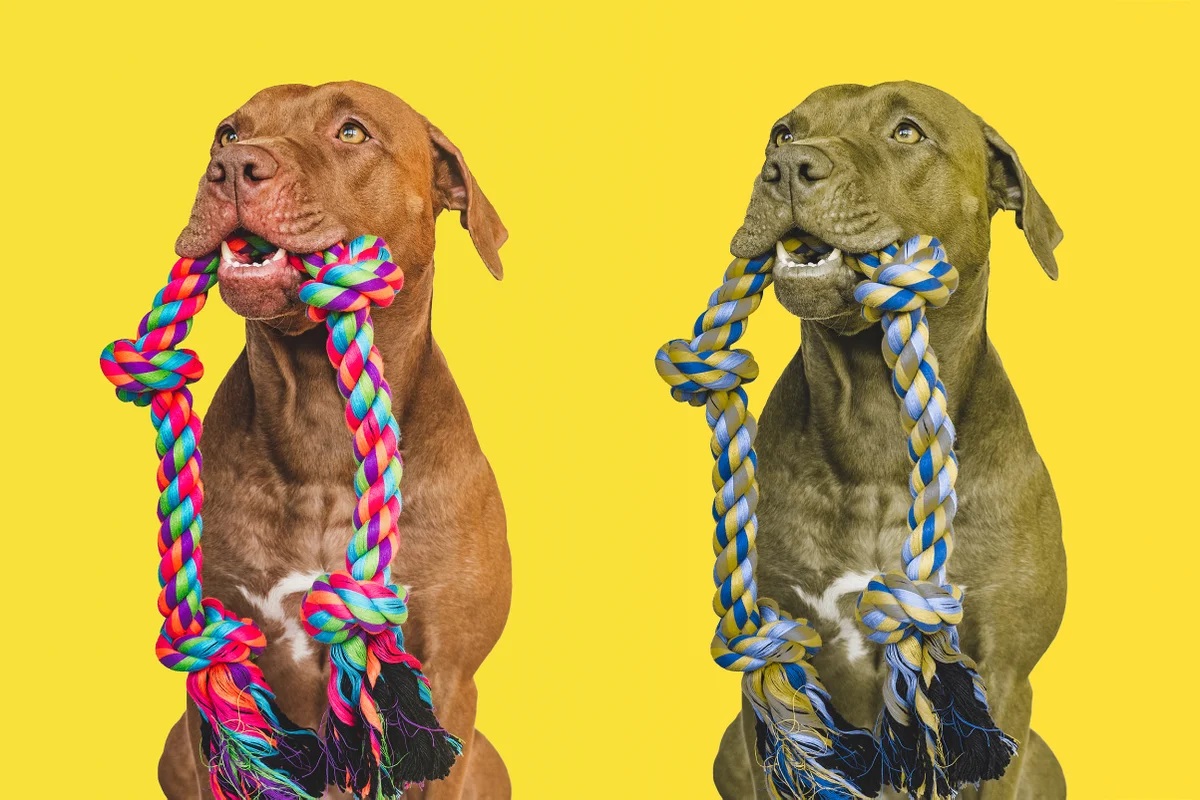When we gaze at a rainbow we see a spectrum of colors, like red orange, yellow, green, blue, indigo and violet. Can our furry companions see the array of colors as we do? Do they distinguish between white bands?. Do the colors appear blurry to them?
The question of how dogs perceive color has been a subject of research with findings. While dogs may not perceive all the colors that humans can their world’s not devoid of color. In reality dogs inhabit an colorful world.
What colors can dogs detect?
Color perception is mediated by nerve cells in the eye. The retina contains two types of cells; rods for detecting levels and motion; and cones for distinguishing colors. Humans have three types of cones that enable us to recognize combinations of red, blue and green. On the hand dogs have two types of cones and are capable of discerning blue and yellow shades. This limited ability to perceive color is known as vision.
Although humans have cones that allow us to see a spectrum of colors and more vivid hues than dogs do our canine friends possess more rods which give them an advantage, in low light conditions or when spotting moving objects.
What is blindness and can dogs see colors?
Color blindness refers to variations, in the ability to see colors. In humans the extent of blindness depends on the color receptors affected in the eyes. There are two types of color blindness in humans; green and blue yellow. Those with color blindness struggle to differentiate between these two colors while those with blue yellow color blindness have difficulty distinguishing between yellow and blue objects.
In terms of perceiving colors a dogs vision is most similar to that of a person with color blindness. Dogs have not been observed to exhibit levels of color blindness.
How does a dogs vision compare to vision?
Dogs can perceive colors although not extensively as humans do. They may not see colors vividly or accurately as we do because they are less sensitive to changes in brightness.
For instance red might appear gray or black, to dogs.
Dogs perceive orange and green hues, as yellowish. Blue stands out to them. Purple blends in with blue. During a game of fetch dogs may mix up a ball with an one due to their limited color vision. However their keen sense of smell helps them distinguish their ball and avoid confusion while playing in the park.
Apart from color perception differences, dogs and humans have varying abilities. Dogs tend to be more nearsighted compared to us; objects that appear clear to us might seem blurry to dogs when viewed from the distance.
Are there any disparities between dogs and humans?
Dogs possess advantages, over humans. Their eyes are positioned on the sides of their heads granting them a peripheral vision range than we have. Yet this comes at the cost of reduced sharpness leading to dogs lacking the depth perception that humans enjoy.
Additionally dogs have pupils that dilate fully enabling them to maximize light intake.
Dogs have cells, beneath their retina called the tapetum, which reflects light back through the retina aiding their vision in low light conditions. This is why a dogs eyes appear to glow in the dark or when a photo is taken with a flash.
Compared to humans dogs have rod cells in their retina, which help them detect motion subtle movements from afar. As a result dogs excel at seeing in conditions like dusk and dawn and are adept at spotting moving objects.
The unique visual features of dogs stem from their instincts for survival. Hunting prowess, in the wild. While modern dogs are cherished members of our families and protected from dangers their exceptional vision skills remain a part of being a canine.

